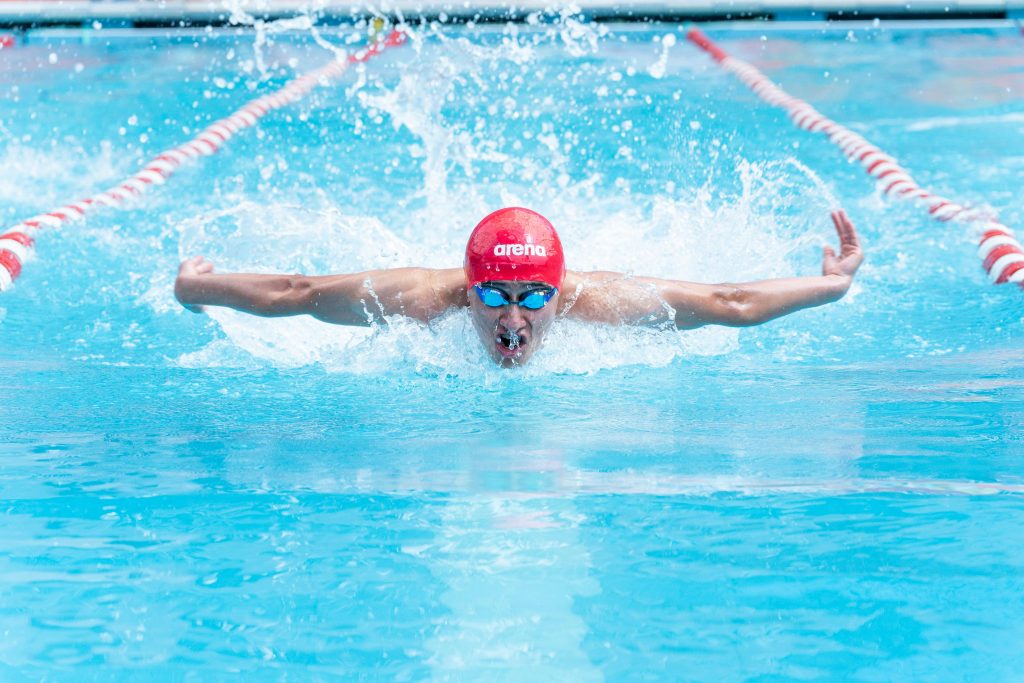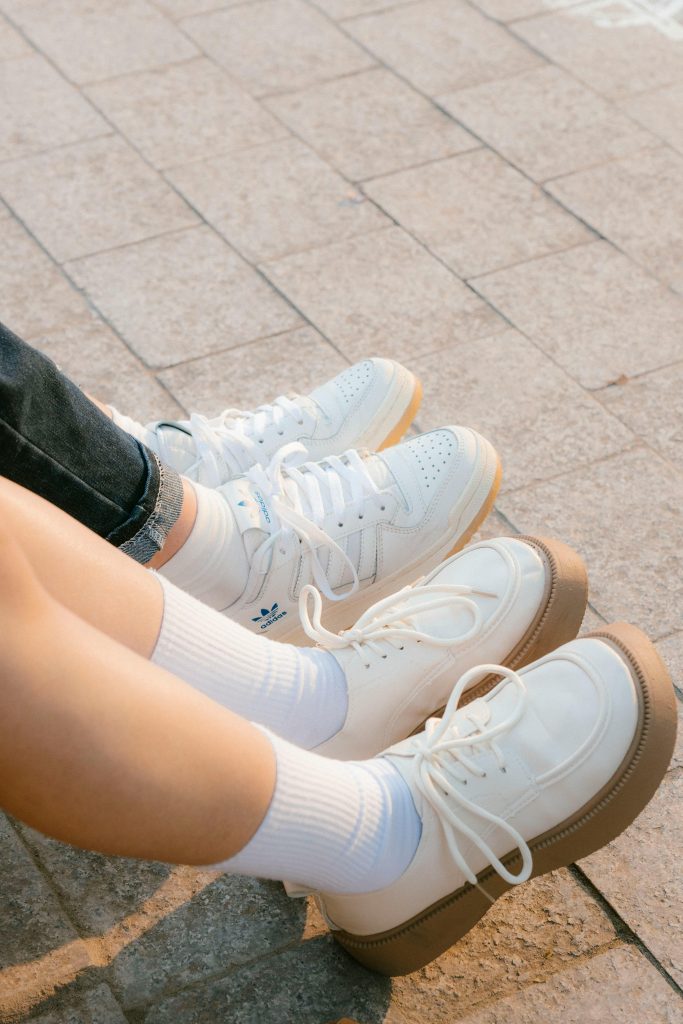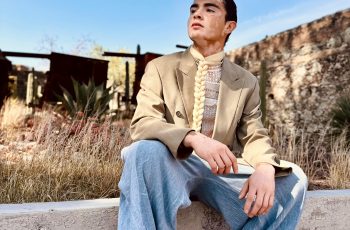Step into the world of professional athletics as we take a closer look at the growing trend of knit sneakers. These innovative and stylish shoes have been making waves across various sports, providing athletes with a comfortable and adaptive footwear option. From basketball to running, the versatility and performance of knit sneakers cannot be overlooked. Join us as we explore the technology behind these game-changing shoes and how they have become a staple in the athletic community.
The rise of knit sneakers in professional athletics
Introduction to knit sneakers in professional athletics
In recent years, there has been a significant rise in the popularity of knit sneakers in professional athletics. These innovative footwear options have revolutionized the way athletes approach their training and performance. Knit sneakers are lightweight, flexible, and breathable, providing athletes with the perfect combination of comfort and functionality. This article will delve into the key features and benefits of knit sneakers, their growing popularity among professional athletes, their suitability for different sports, and the challenges they face in the world of professional athletics.
Key features and benefits of knit sneakers
One of the primary reasons behind the surge in popularity of knit sneakers in professional athletics is their impressive range of features and benefits. These sneakers are constructed using a unique knitted footwear technology, which allows for seamless construction, enhanced breathability and ventilation, improved flexibility and freedom of movement, lightweight design for agility and speed, impact absorption and cushioning properties, and support and stability features. Moreover, knit sneakers offer a modern and stylish look, making a statement both on and off the sports field.
Growing popularity among professional athletes
Knit sneakers have gained immense popularity among professional athletes from various sports disciplines. Athletes have realized the importance of having footwear that not only enhances their performance but also keeps them comfortable and reduces the risk of injuries. Many professional athletes, including runners, basketball players, soccer players, tennis players, and cross-trainers, have embraced knit sneakers as their footwear of choice. The combination of performance, comfort, and style offered by knit sneakers has made them a favorite among athletes at all levels.
Advantages and disadvantages of knit sneakers in professional athletics
As with any innovation, there are advantages and disadvantages to using knit sneakers in professional athletics. The advantages of knit sneakers include enhanced breathability and ventilation, improved flexibility and freedom of movement, lightweight design for agility and speed, impact absorption and cushioning properties, and support and stability features. On the other hand, some disadvantages include challenges in moisture management and water resistance, concerns regarding durability and abrasion resistance, fit and sizing variations, and perceived barriers in professional sports. Despite these limitations, the advantages of knit sneakers far outweigh the disadvantages, making them a popular choice among athletes.
Understanding the technology behind knit sneakers
Introduction to knitted footwear technology
Knitted footwear technology is the foundation behind the construction of knit sneakers. Unlike traditional athletic footwear that is typically constructed using multiple layers of different materials, knit sneakers are made using a specialized knitting process. This technology allows for the creation of a seamless upper, which not only provides a comfortable fit but also enhances the overall durability and flexibility of the sneakers.
How are knit sneakers made?
The manufacturing process of knit sneakers involves the use of high-tech knitting machines that create a seamless upper. The upper is constructed by weaving threads or yarns together, resulting in a fabric-like material that adapts to the foot’s shape. This seamless construction eliminates the need for traditional stitching and reduces the risk of discomfort or irritation caused by friction. Once the upper is complete, it is combined with a sole unit, which can vary depending on the specific requirements of the sport for which the sneakers are designed.
Materials used in knit sneakers
The materials used in the construction of knit sneakers vary depending on the brand and the specific model. However, most knit sneakers utilize a combination of synthetic fibers, such as polyester or nylon, and elastane or spandex. These materials offer excellent breathability, moisture-wicking properties, and stretchability, allowing the sneakers to adapt and conform to the foot. Additionally, some brands incorporate environmentally friendly materials, such as recycled plastics or organic fibers, in their knit sneakers, contributing to the sustainability of the footwear industry.
The role of seamless construction in knit sneakers
The seamless construction of knit sneakers plays a crucial role in their performance and comfort. Traditional stitched footwear often has seams that can cause irritation or chafing during intense physical activity. In contrast, knit sneakers feature a seamless upper, eliminating these potential discomforts. The seamless design also enhances the overall durability of the sneakers, ensuring that they can withstand the rigors of professional athletics. Additionally, the absence of seams allows for better flexibility and freedom of movement, enabling athletes to perform at their best without any restrictions.

Performance and functionality of knit sneakers in professional sports
Enhanced breathability and ventilation
One of the standout features of knit sneakers is their exceptional breathability and ventilation. The unique knitted construction allows for the incorporation of breathable areas and air channels within the upper material. This promotes airflow and helps to dissipate heat, keeping the feet cool and dry even during intense physical activity. The enhanced breathability and ventilation of knit sneakers provide a comfortable environment for the feet, reducing the risk of discomfort and foot-related issues such as blisters and fungal infections.
Improved flexibility and freedom of movement
Another key advantage of knit sneakers is their superior flexibility and freedom of movement. The seamless construction and flexible materials used in the upper allow the sneakers to adapt to the natural movement of the foot. This allows athletes to make quick and agile movements without any hindrance from the footwear. The improved flexibility and freedom of movement provided by knit sneakers contribute to enhanced performance and a reduced risk of injuries.
Lightweight design for agility and speed
Knit sneakers are known for their lightweight design, which is a critical factor in professional athletics, especially sports that require speed and agility. The lightweight nature of knit sneakers reduces the overall weight on the foot, allowing athletes to move more efficiently and swiftly. This advantage is particularly beneficial in sports such as running, basketball, and soccer, where quick movements and rapid changes in direction are necessary for optimal performance. The lightweight design of knit sneakers gives athletes a competitive edge, enabling them to maintain their speed and agility throughout the game or race.
Impact absorption and cushioning properties
In professional athletics, the ability of sneakers to absorb impact and provide cushioning is essential for the overall comfort and protection of the athlete. Knit sneakers excel in this aspect, thanks to their advanced midsole technologies. Most knit sneakers feature responsive cushioning systems that absorb the shock generated during high-impact activities, such as jumping or landing. This helps to minimize stress on the joints and muscles, reducing the risk of injuries and enhancing overall performance.
Support and stability features in knit sneakers
Support and stability are crucial elements in any athletic footwear. Knit sneakers are designed to provide excellent support and stability without compromising on comfort or flexibility. The knitted upper material offers a snug fit that securely holds the foot in place, preventing unnecessary movements that may lead to injuries. Additionally, many knit sneakers incorporate supportive elements in the midsole and outsole, such as arch support and heel counters, to enhance stability during dynamic movements. These support and stability features contribute to improved performance and reduced risk of ankle sprains or other related injuries.
Suitability of knit sneakers for different sports
Knit sneakers for running
Running is one of the sports that has seen a significant adoption of knit sneakers by professional athletes. The lightweight design, enhanced breathability, and flexibility of knit sneakers make them an ideal choice for runners. The seamless construction and cushioning properties provide optimal comfort and support during long-distance runs, while the lightweight design allows for a natural and unrestricted stride. Knit sneakers for running also often feature responsive midsoles that offer excellent energy return, improving performance and reducing fatigue.
Knit sneakers for basketball
Basketball players require footwear that offers exceptional support, stability, and cushioning. Knit sneakers designed specifically for basketball provide all of these features and more. The knitted upper material conforms to the foot, offering a custom fit that ensures optimal support during lateral movements and quick changes in direction. The cushioning systems in these sneakers absorb impact and provide responsive cushioning, reducing strain on the joints and muscles. The lightweight design of knit sneakers for basketball also adds to the agility and speed needed in the sport.
Knit sneakers for soccer
Soccer players often have to navigate various terrains and perform quick movements on the field. Knit sneakers designed for soccer provide the necessary features for optimal performance. The lightweight knit construction allows for agility and speed, while the snug fit and support offer stability during quick changes in direction. Additionally, the seamless construction reduces the risk of chafing or discomfort during extended periods of play, allowing players to focus on their game without distractions. The cushioning and impact absorption properties of knit sneakers for soccer also contribute to player comfort and injury prevention.
Knit sneakers for tennis
Tennis requires quick lateral movements, agility, and stability. Knit sneakers designed for tennis offer the perfect combination of these features. The snug fit and seamless construction provide excellent support and stability, minimizing the risk of ankle injuries during sudden changes in direction. The lightweight design allows for swift movements without sacrificing comfort. The cushioning properties of knit sneakers for tennis help absorb impact during high-intensity rallies, reducing fatigue and enhancing endurance on the court.
Knit sneakers for cross-training
Cross-training involves a wide range of exercises and movements, making versatility and adaptability crucial in the choice of footwear. Knit sneakers designed for cross-training excel in these aspects. The lightweight and flexible design of knit sneakers allow for seamless transitions between different types of exercises, whether it be weightlifting, cardio, or agility drills. The support and stability features provide a solid foundation during strength training exercises, while the impact absorption and cushioning properties cater to higher-intensity cardio activities. Knit sneakers for cross-training deliver the necessary performance and functionality across various training modalities.

Comparing knit sneakers with traditional athletic footwear
Differences in construction and design
Knit sneakers and traditional athletic footwear differ significantly in their construction and design. While traditional athletic footwear typically features layers of different materials, such as leather, mesh, and synthetic overlays, knit sneakers have a streamlined design that eliminates the need for multiple layers. The seamless construction of knit sneakers provides a more comfortable fit and reduces the risk of irritation or chafing caused by seams or stitching. Traditional athletic footwear may offer additional features, such as ankle support or protective toe caps, which are not as prevalent in knit sneakers.
Performance comparisons in various sports
When it comes to performance, both knit sneakers and traditional athletic footwear have their strengths and weaknesses. Traditional athletic footwear often excels in providing targeted support and protection specific to certain sports or activities. For example, hiking boots offer superior ankle support and traction on rugged terrain, which is not a primary focus of knit sneakers. On the other hand, knit sneakers excel in providing lightweight and breathable options that enhance flexibility and freedom of movement, making them popular choices in sports like running and basketball. The choice between knit sneakers and traditional athletic footwear ultimately depends on the specific needs and preferences of the athlete.
Durability and longevity factors
Durability and longevity are important considerations for athletes who rely on their footwear to withstand intense training and competition. Traditional athletic footwear often features more robust materials, such as leather or synthetic overlays, that are designed to withstand high levels of wear and tear. Knit sneakers, while durable, may have concerns regarding their longevity due to the nature of the knitted upper material. However, advancements in materials and manufacturing techniques have significantly improved the durability of knit sneakers, making them increasingly suitable for professional athletics. Ultimately, proper care and maintenance are essential for maximizing the lifespan of both knit sneakers and traditional athletic footwear.
Maintenance and care requirements
The maintenance and care requirements for knit sneakers and traditional athletic footwear differ slightly. Traditional athletic footwear may require cleaning and conditioning specific to the materials used, such as leather or suede. Some traditional athletic footwear models may also require waterproofing treatments or regular applications of protective solutions to maintain their performance. Knit sneakers, on the other hand, are typically machine washable, making them easier to keep clean and fresh. However, it is important to follow the manufacturer’s instructions to ensure the longevity and performance of knit sneakers. Regular cleaning and proper storage are essential for both types of footwear to maintain their functionality and prolong their lifespan.
The role of knit sneakers in injury prevention and recovery
Impact on foot and ankle stability
Foot and ankle stability are crucial factors in preventing injuries during sports activities. Knit sneakers, with their snug fit and support, play a significant role in enhancing foot and ankle stability. The seamless construction of knit sneakers eliminates potential pressure points or areas of irritation, ensuring a comfortable fit that securely holds the foot in place. This stability reduces the risk of twisting or rolling the ankle during quick movements or sudden changes in direction, thus minimizing the likelihood of ankle sprains or other related injuries.
Reduced risk of blisters and chafing
Blisters and chafing can be debilitating for athletes, causing discomfort and hindering performance. Knit sneakers, with their seamless construction and breathable materials, significantly reduce the risk of blisters and chafing. The absence of seams or stitching eliminates potential friction points, preventing the formation of blisters or discomfort caused by chafing. The breathable and moisture-wicking properties of knit sneakers also help to keep the feet dry, reducing the likelihood of blisters and enhancing overall foot comfort during prolonged physical activity.
Management of foot conditions and injuries
Knit sneakers can offer support and relief to athletes dealing with various foot conditions or injuries. The flexibility and adaptability of knit sneakers allow for customization and accommodation of specific requirements, such as orthotics or braces. The seamless construction of knit sneakers also provides a comfortable and irritation-free environment for athletes with sensitive feet or prone to foot-related issues. Additionally, the cushioning properties of knit sneakers aid in the management of impact-related injuries, such as stress fractures or plantar fasciitis, by reducing the strain on affected areas.
Support during rehabilitation and recovery
During the rehabilitation and recovery phase after an injury, proper footwear plays a vital role in supporting the healing process. Knit sneakers, with their combination of comfort, support, and flexibility, can assist in this aspect. The lightweight design and responsive cushioning of knit sneakers reduce the impact on the injured area, allowing for a more comfortable recovery. The support and stability features of knit sneakers can also provide additional reinforcement and protection to the injured foot or ankle, aiding in the rehabilitation process. However, it is essential to consult with a healthcare professional or specialist to determine the appropriate footwear for specific injuries or conditions.

Integration of style and fashion in knit sneakers
Evolving trends in athletic footwear fashion
Athletic footwear has evolved beyond its functional purpose and has become a significant fashion statement in recent years. Knit sneakers have played a significant role in this fashion revolution. With their sleek and modern design, knit sneakers have become a style icon both on and off the sports field. The integration of style and fashion in knit sneakers has not only resulted in attention-grabbing designs but has also opened up a new market segment attracting consumers who seek athletic footwear that not only performs but also looks trendy and fashionable.
Customization and personalization options
One of the key aspects that have contributed to the popularity of knit sneakers is the ability to customize and personalize them according to individual preferences. Many brands offer customization options, allowing athletes to choose colors, patterns, and even add personal details to their sneakers. This not only adds a personal touch to the footwear but also enables athletes to express their unique sense of style. The ability to customize and personalization options in knit sneakers adds to their appeal and sets them apart from traditional athletic footwear.
Celebrity endorsements and collaborations
Celebrity endorsements and collaborations have played a significant role in propelling the popularity of knit sneakers in the fashion world. Well-known athletes and celebrities often partner with footwear brands to create their signature knit sneakers or collaborate on limited-edition collections. These collaborations generate excitement and create a buzz around knit sneakers, attracting both sports enthusiasts and fashion-conscious individuals. Celebrity endorsements and collaborations also showcase the versatility and style of knit sneakers, encouraging more people to embrace them as a fashion statement.
Impact of knit sneaker design on consumer preferences
The design of knit sneakers has had a profound impact on consumer preferences, aligning both functionality and style. The sleek and modern design of knit sneakers appeals to a wide range of consumers who seek footwear that not only performs well but also looks fashionable. The availability of different color options, patterns, and designs in knit sneakers allows consumers to express their individuality and personal style. The incorporation of knit sneakers into everyday fashion has led to increased demand and a shift in consumer preferences, as more people seek athletic footwear that effortlessly combines comfort and style.
Environmental sustainability and knit sneakers
Exploring eco-friendly materials in knit sneakers
As the world becomes increasingly aware of the environmental impact of consumer goods, the footwear industry has started exploring eco-friendly materials for manufacturing sneakers. Knit sneakers have joined the sustainable fashion movement, with brands incorporating environmentally friendly materials into their designs. Some manufacturers use recycled plastics or organic fibers for the upper material, reducing the demand for new raw materials and reducing waste. These eco-friendly materials not only contribute to a more sustainable future but also deliver the performance and comfort that athletes expect from their footwear.
Reduced waste and carbon footprint
Knit sneakers have the potential to significantly reduce waste and carbon footprint in the footwear industry. The manufacturing process of knit sneakers produces less waste compared to traditional athletic footwear, thanks to the seamless construction that minimizes the amount of material needed. Moreover, the use of sustainable materials, as mentioned earlier, further reduces the carbon footprint associated with manufacturing. By embracing knit sneakers, athletes and consumers alike can contribute to reducing the environmental impact of the footwear industry and promote sustainability.
Recycling and upcycling initiatives in the industry
Recycling and upcycling initiatives are gaining traction in the footwear industry, and knit sneakers are not exempt from these efforts. Some brands have started implementing programs that allow consumers to recycle their old knit sneakers instead of throwing them away. These programs collect the sneakers and process them to be used as raw materials for manufacturing new products. Additionally, upcycling initiatives repurpose old or damaged knit sneakers into new accessories or items, diverting them from landfills and extending their usefulness. These initiatives contribute to the circular economy and promote a more sustainable approach to manufacturing and consumption.
Role of knit sneakers in sustainable fashion movement
Knit sneakers have emerged as a prominent player in the sustainable fashion movement. With their streamlined construction, eco-friendly materials, and reduced waste, knit sneakers epitomize the principles of sustainability. By choosing knit sneakers, athletes can actively participate in promoting sustainable practices in the fashion industry. This shift towards sustainable footwear not only benefits the environment but also encourages other brands and consumers to consider the environmental impact of their choices. Knit sneakers represent a step towards a more sustainable future, where fashion and performance go hand in hand with environmental consciousness.
Challenges and limitations of knit sneakers in professional athletics
Moisture management and water resistance challenges
One of the challenges that knit sneakers face in professional athletics is moisture management and water resistance. While the breathable nature of knit sneakers allows for excellent airflow, it also means that moisture, such as sweat or rainwater, can penetrate the upper material. This can result in discomfort, especially during prolonged physical activity or exposure to wet weather conditions. To address this challenge, some brands have introduced water-resistant coatings or treatments to the knit upper to provide a certain level of water repellency, but complete water resistance remains a challenge.
Durability and abrasion resistance concerns
Durability and abrasion resistance can be a concern for knit sneakers, primarily due to the nature of the knitted upper material. Knit sneakers may be more susceptible to wear and tear over time, especially in high-impact areas or during intense sporting activities. Although advancements in materials and construction techniques have improved the durability of knit sneakers, they may not match the longevity of traditional athletic footwear made from more robust materials. Athletes who rely heavily on their footwear for performance and require long-lasting durability may still opt for traditional athletic footwear over knit sneakers.
Fit and sizing variations
With its flexible and adaptive nature, knit sneakers may exhibit variations in fit and sizing compared to traditional athletic footwear. The stretchability of the knitted upper material may result in a more customized and snug fit for some athletes but can also lead to sizing discrepancies. Some athletes may find that knit sneakers run either slightly smaller or larger than their usual size, requiring them to experiment with different sizes or try on multiple pairs before finding the perfect fit. Brands have made efforts to address these discrepancies by providing detailed fitting guides, but individual foot shape and preferences can influence the overall fit experience.
Overcoming perception barriers in professional sports
Innovation and change often face initial resistance and perception barriers in any industry, including professional sports. Some athletes, coaches, and trainers may still harbor doubts or skepticism regarding the performance and durability of knit sneakers compared to traditional athletic footwear. Overcoming these perception barriers requires education and awareness about the advancements in knit sneaker technology and the positive experiences shared by athletes who have adopted knit sneakers. As more professional athletes embrace knit sneakers and experience their benefits firsthand, the perception barriers are gradually being overcome, and a wider acceptance of this innovation is becoming apparent.
Future of knit sneakers in professional athletics
Advancements in knit sneaker technology
The future of knit sneakers in professional athletics holds exciting possibilities as advancements in technology continue to push the boundaries of performance and innovation. Manufacturers are constantly experimenting with new materials and techniques to improve the durability, water resistance, and performance of knit sneakers. The integration of additional support elements, advanced cushioning systems, and smart technologies into knit sneakers is expected to further enhance their suitability for professional athletes in various sports. The continuous advancement in knit sneaker technology will continue to reshape the landscape of professional athletics footwear in the years to come.
Potential applications in other industries
While knit sneakers have made a significant impact on the world of professional athletics, their potential applications stretch beyond the realm of sports. The comfort, flexibility, and style that knit sneakers offer make them suitable for a wide range of activities and industries. From leisurewear to casual fashion, knit sneakers are becoming a popular choice for individuals seeking footwear that combines functionality and style. Additionally, the lightweight and breathable nature of knit sneakers may find applications in healthcare and professions that require extended periods of standing or physical activity.
Innovation in performance and design
Innovation in the performance and design of knit sneakers will continue to drive their popularity in professional athletics. As technology improves, manufacturers will strive to enhance the cushioning, support, stability, and durability of knit sneakers. The integration of smart technologies, such as sensors or data tracking capabilities, may also facilitate performance monitoring and enhancement for athletes. In terms of design, knit sneakers will continue to push the boundaries of style, with collaborations, customization options, and unique colorways that appeal to athletes and fashion-conscious individuals alike.
Predictions and trends for the future
Looking ahead, it is expected that knit sneakers will become even more prevalent in professional athletics. The demand for lightweight, breathable, and comfortable footwear that enhances performance will continue to drive the popularity of knit sneakers. It is likely that more professional athletes will adopt knit sneakers as their preferred choice for training and competition. Additionally, with increasing consumer awareness about sustainability, the demand for eco-friendly knit sneakers is expected to rise. The future of knit sneakers in professional athletics is bright, with continued advancements in technology and a growing appreciation for their performance and style.


